In 1982, an artist named Joseph Beuys created pile of basalt stones in front of the Fridericianum museum in Kassel, Germany as part of a contemporary art event called Documenta 7. The 7,000 stones were not, however, the end of the piece. They were merely markers for the real goal of the project that they were pointing toward—the planting of 7,000 trees throughout the city.
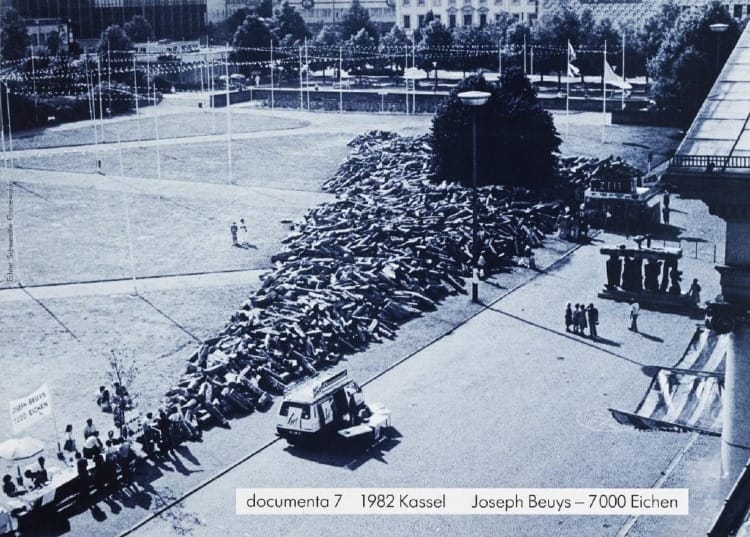
Stones and Trees
The apparently random pile of stones actually formed the shape of an arrow with the arrow's end pointing directly at the trunk of a small, recently planted sapling. Beside the sapling, was a single upright basalt marker, like the ones heaped to its side.
The challenge of the piece was that the basalt slabs would remain where they were until they were pulled out one by one to be markers beside the 7,000 oak, basswood, sycamore, and maple trees that were planted across the city. The work's full title was "7000 Eichen – Stadtverwaldung statt Stadtverwaltung" (translated into English as "7000 Oaks: City Forestation Instead of City Administration") - was based on several convictions held by Beuys.
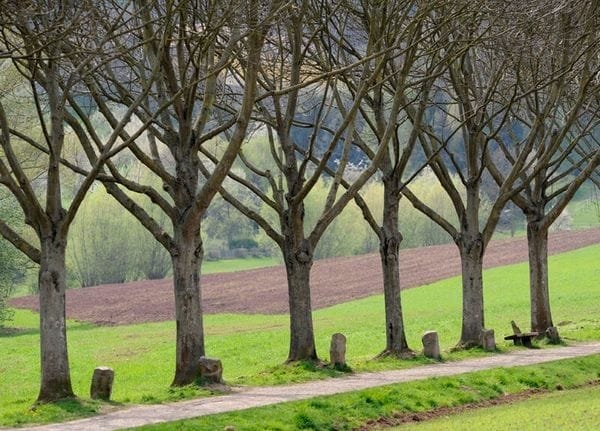
In a place of heavy industrialization and in an era of growing ecological concern, Beuys believed that humans were dependent upon the larger ecosystem of plants, and that humans and trees needed closer connections within urban environments. Ultimately, Beuys wanted to make “the world a big forest, making towns and environments forest-like.” The pairing of the stones and the trees was meant to embody Beuys' belief that human-made structures and nature could and should coexist in harmony.
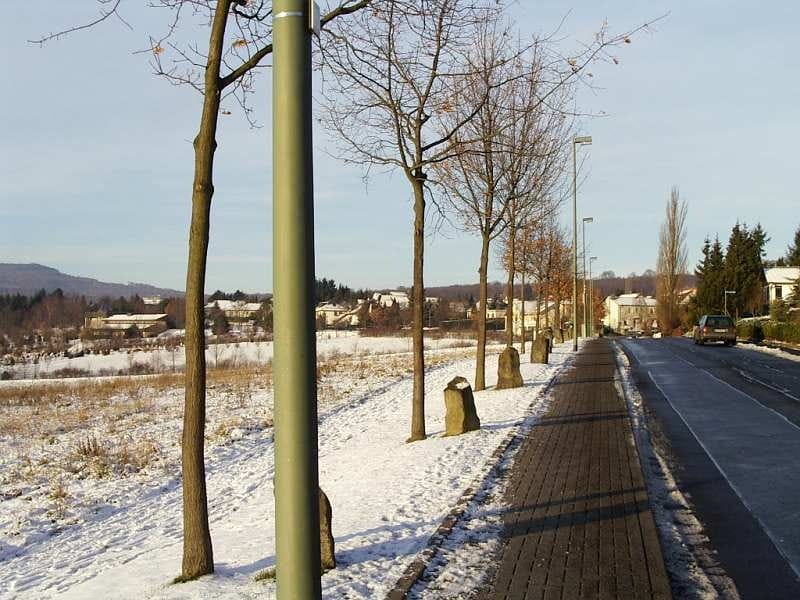
In Beuys’ own words, then, “My point with these seven thousand trees was that each would be a monument, consisting of a living part, the live tree, changing all the time, and a crystalline mass, maintaining its shape, size and weight. This stone can be transformed only by taking from it, when a piece splinters off, say, never by growing. By placing these two objects side by side, the proportionality of the monument’s two parts will never be the same."
A Work of Many Artists
Beuys based his work on a philosophy of "social sculpture," which holds that all of society is art and that all members of that society can contribute creatively to the art of that sculpture. A well-known quote of his was, "Everyone is an artist."
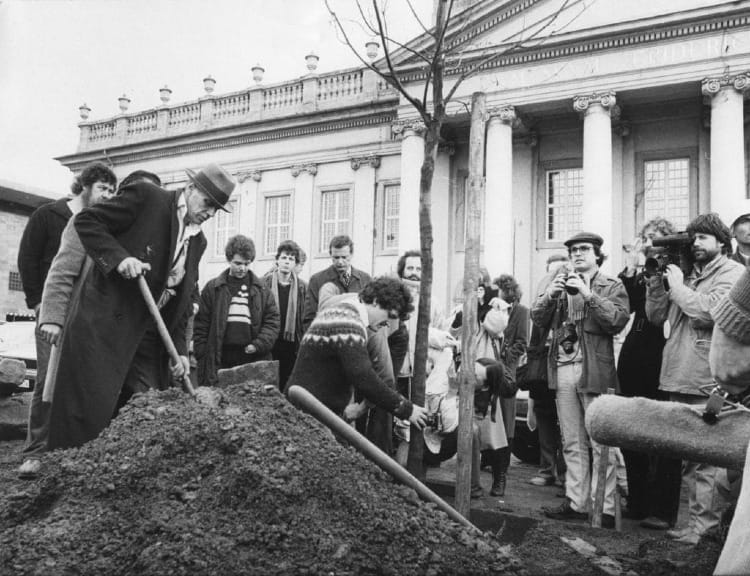
It was never Beuys' intent or ideal that "7000 Oaks" would be completed by him alone. He was primarily the facilitator of this massive work of art to be completed by the whole of Kassel society. Although he planted the first tree to start off the work, and participated in tree plantings throughout the first years of its implementation, it rested on the entire city to complete the planting of the 7,000 trees. Until that happened, the work would be unfinished, and the pile of stone markers would remain in the middle of the city center for all to see and be reminded by.
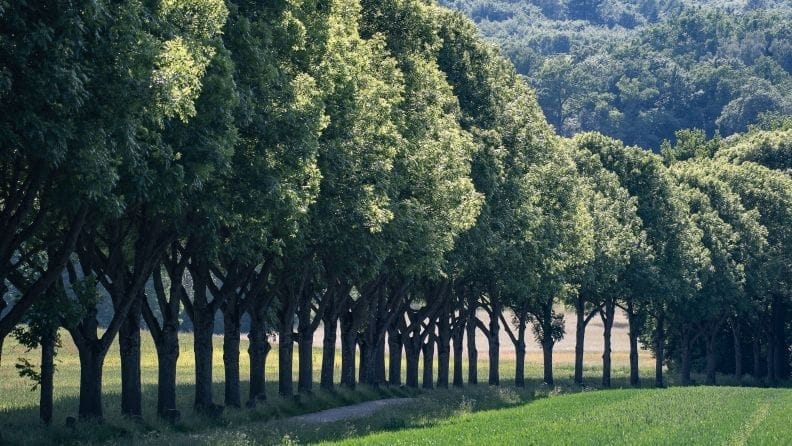
Between 1982 and 1987, residents, city planners, gardeners, and environmentalists chose locations for the saplings and planted them. Plans, including those for car parks, were changed as they became locations for groves of trees instead of paved lots. There was controversy—both from pro-industrialists who fought against what they deemed as anti-progress and from those who objected to the unsightly heap of basalt markers cluttering up the lawn in front of the Fridericianum.
Fortunately for the sake of the project, Kassel's mayor was a strong proponent of the project and there were individuals and organizations such as the DIA Art Foundation and the Free International University (which had been founded by Beuys) who labored to complete the tree plantings. As the new trees added green to the landscape and as the pile of stones in the city center began to shrink, many former opponents of the project began to change their minds about the project. Some even became advocates as the planted trees began to transform the city.
Spreading Influence
Beuys died in 1986, the year before the completion of the project, but others carried it forward. His son, Wenzel, planted the last tree of the project in 1987. But even with the 7,000th tree planted in the ground, the project continued to spread.
Beuys always envisioned the "7000 Oaks" project as the first step of a larger worldwide movement of social and environmental change. His goal was that it would ignite similar projects around the world and that the end result would be the eventual renewal of urban areas with stronger connections between humans and the rest of nature.
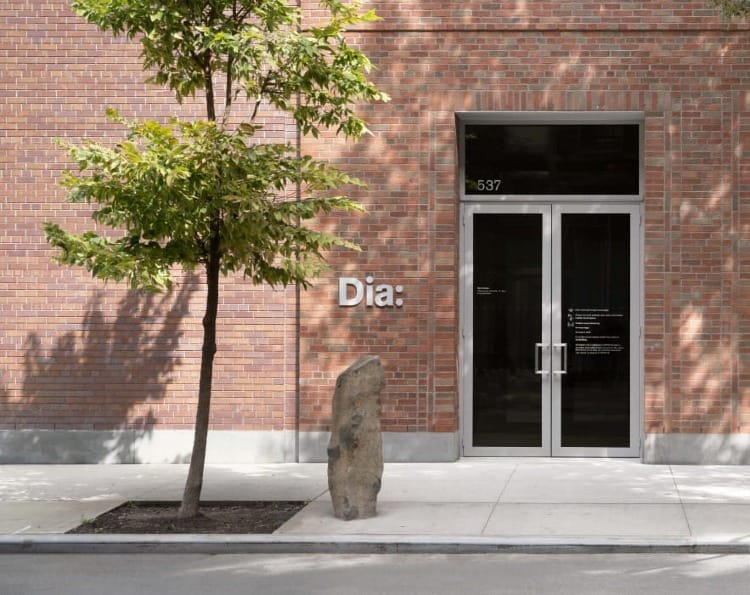
In many ways, Beuys' hope for "7000 Oaks" has come to fruition. Not only is the project viewed as a seminal work in the area of environmental and land art, but it has also been the source and inspiration of many other art projects that have either expanded upon or honored the work of "7000 Oaks."
Tree plantings and other projects that have come out of "7000 Oaks" have been created in diverse places such as Australia, Norway, and the U.S. One such project involved the collection of acorns from the original trees that were then raised into saplings, 100 of which were exhibited outside the Tate Modern in the UK on the anniversary year of Beuys' birth. The University of Maryland established a Joseph Beuys Sculpture Park and the Joseph Beuys Tree Partnership initiative, which has planted 350 trees around Baltimore through the participation of 500 volunteers. A current project titled "7000 Humans" pairs up humans and trees to create new, healthier relationships throughout the ecosystem.
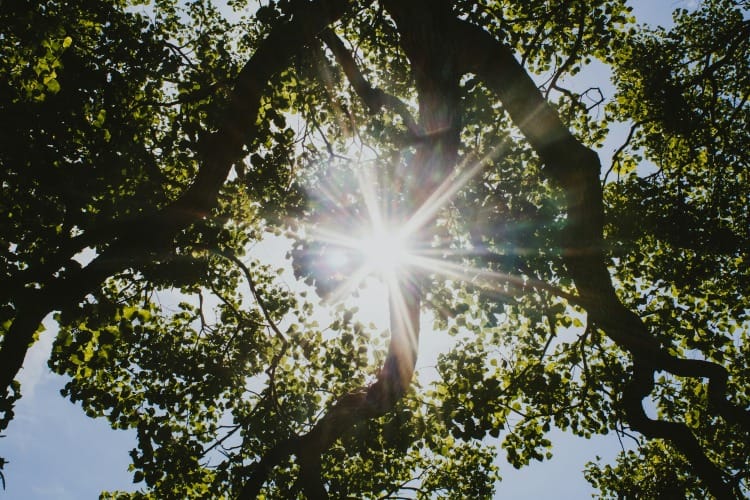
Beuys thought and talked about what the future of the 7000 Oaks project would look like. As he said, "Once the tree has established itself, it's just nature. A tree full of chirping birds with the wind blowing through it… music! This is Sculpture that reaches far into the future."
Reflection Questions: Have you lived in an urban environment that was devoid of trees? If so, what affect did it have on you? In what ways do you contribute your creativity to the sculpture that makes up society?
Feel free to leave a comment below or contact me directly at louise.conner@circlewood.online.
Louise
